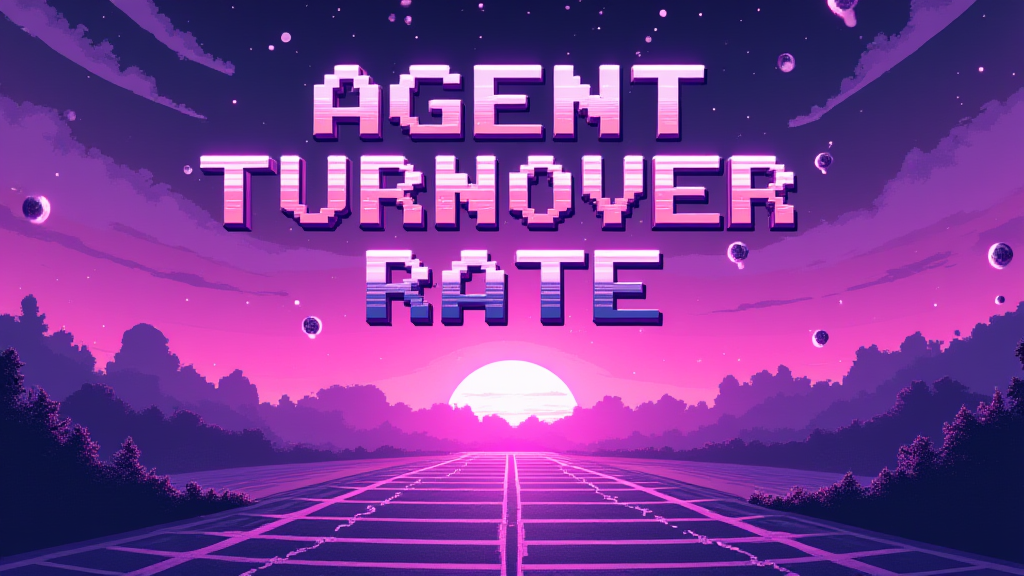Agent Turnover Rate: Measuring Sales Team Churn

Published on: October 01, 2024
In the dynamic world of sales and customer service, the Agent Turnover Rate is a critical metric that measures the percentage of agents who leave an organization within a specific time period. This key performance indicator (KPI) provides valuable insights into the stability and health of a company's sales force or customer service team.
Understanding Agent Turnover Rate 📊
Agent Turnover Rate is calculated by dividing the number of agents who leave the company during a given period by the average number of agents employed during that same period, then multiplying by 100 to get a percentage.
The formula for Agent Turnover Rate is:
\[\text{Agent Turnover Rate} = \frac{\text{Number of Agents Who Left}}{\text{Average Number of Agents}} \times 100\%\]
Why Agent Turnover Rate Matters 🎯
Understanding and managing Agent Turnover Rate is crucial for several reasons:
- Cost Implications: High turnover rates can lead to increased recruitment and training costs.
- Team Morale: Frequent departures can negatively impact the morale of remaining team members.
- Customer Experience: New agents may take time to reach optimal performance, potentially affecting customer satisfaction.
- Operational Efficiency: Constant onboarding of new agents can disrupt workflow and productivity.
Industry Benchmarks and Variations 📈
Agent Turnover Rates can vary significantly across industries:
| Industry | Average Turnover Rate |
|---|---|
| Call Centers | 30-45% |
| Insurance Agents | 20-30% |
| Real Estate Agents | 15-25% |
It's important to note that these figures can fluctuate based on factors such as company size, location, and economic conditions.
Strategies to Reduce Agent Turnover 🛠️
To improve retention and lower Agent Turnover Rate, organizations can implement several strategies:
- Enhance Onboarding: Develop comprehensive training programs to set new agents up for success.
- Offer Career Growth: Provide clear paths for advancement and skill development.
- Improve Work Environment: Foster a positive culture and address workplace stressors.
- Competitive Compensation: Ensure salaries and benefits are in line with or above industry standards.
- Regular Feedback: Implement systems for ongoing performance reviews and two-way communication.
Common Misconceptions About Agent Turnover ⚠️
There are several misconceptions about Agent Turnover Rate that managers should be aware of:
- All turnover is bad: Some turnover can be healthy, bringing in fresh perspectives and talent.
- Money is the only factor: While important, compensation is not the sole driver of turnover.
- It's HR's problem: Reducing turnover requires a company-wide effort, not just HR initiatives.
Leveraging Technology to Manage Turnover 💻
Modern sales and marketing operations can use various tools to monitor and manage Agent Turnover Rate:
- HR Analytics Platforms: Track turnover trends and identify potential risk factors.
- Employee Engagement Software: Measure satisfaction and gather feedback regularly.
- Performance Management Systems: Set clear expectations and provide ongoing support.
By implementing these strategies and leveraging technology, organizations can work towards optimizing their Agent Turnover Rate, leading to improved performance, reduced costs, and enhanced customer satisfaction.
Implementing Agent Turnover Rate in Your Organization 🤔
As you consider the impact of Agent Turnover Rate on your sales or marketing operations, ask yourself:
- How does our current Agent Turnover Rate compare to industry benchmarks?
- What are the primary reasons agents leave our organization?
- How can we improve our onboarding and training processes to better retain agents?
- Are we effectively using data and analytics to predict and prevent turnover?
- How can we create a culture that encourages long-term commitment from our agents?
By addressing these questions, you can develop a comprehensive strategy to manage and improve your Agent Turnover Rate, ultimately driving better results for your sales and marketing teams.
















